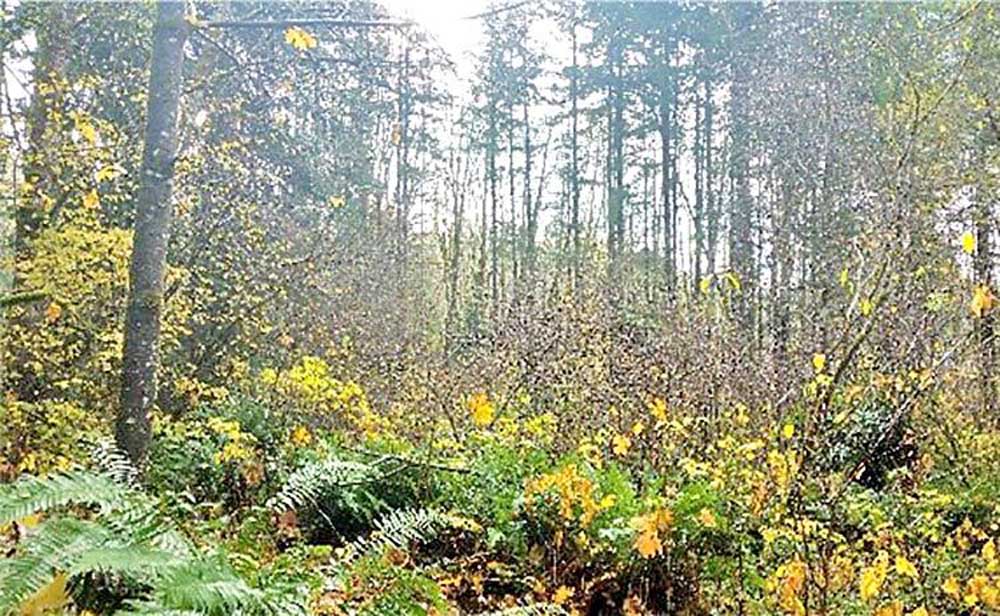Learn the value of small, forested acreage
Published 12:15 pm Thursday, June 15, 2023

- One aspect of forest stewardship consists of controlling “ladder fuels” — small, dry vegetation that can spread wildfire between larger trees.
Whether you have a backyard or a back 40, your forested land holds value. Regionally, development of rural lands fragments the land and property prices are increasing. This makes it more difficult for the younger generation to purchase large parcels of forested land. However, that rural 2-acre wooded parcel you’ve considered buying is still worth stewarding because of the ecosystem services it can provide.
Trending
Environmental stewardship leads to more efficient ecosystem services. Small, forested acreage still sequesters carbon while the soil and roots of vegetation filter pollutants from groundwater. If you live near a salmon-bearing stream or river, planting native streamside vegetation shades and cools the water, offers aquatic species food sources, and benefits the local salmon population. These services support the overall ecosystem and lead to better air and water quality in your watershed.
Habitat fragmentation is a constant threat to the livelihood of local ecosystems, but there is good news: if you own 1-5 acres, your wooded land plays an important role in the network of pockets that contain suitable habitat for wildlife. These small habitat “islands” alleviate stress on local wildlife, including birds, insects, and pollinators, offering shelter, food, and water. By stewarding small, wooded acreage, you are building a corridor for wildlife to pass through and increasing local environmental biodiversity.
Effective stewardship
Work with your local Conservation District (CD): If you need support to meet your land goals, consider working with your local Conservation District to develop a forest management plan. Forest management, even on small acreage, can improve the prosperity and health of your land. By working with a non-regulatory agency like a CD, you can develop a management plan tailored to the land you’re stewarding. Before calling your local CD, Conservation District’s Cluster Forester Margaret Kreder recommends identifying one or two goals you would like to see for your land. Whether you’d like to see more wildlife habitat, an old growth stand, invasive species removal, or something else, CDs are a practical resource for small acreage landowners that offer assistance and support to help you meet your land-based goals.
Remove Invasive Species: Creating a Forest Management Plan takes time, but that doesn’t mean you can’t act now to improve the health of your forested land. The removal of invasive species from your property is an impactful way to steward your land. Once identified and properly treated, your wooded land can breathe a little easier without the extra competition from invasives. Check out your local noxious weed control board for assistance in identifying invasive species and proper removal. Learn more at www.invasivespecies.wa.gov.
Plant a native garden: Depending on your land goals and site concerns, other stewardship options could include replacing invasives to create a native plant garden that attracts pollinators, reduces erosion through site-specific planting, and invites wildlife to the area through your planting and forest management plans. Native plants are already adapted to our area, and they are considered low maintenance which means less watering and fertilizing for you! If you live in Thurston County or surrounding areas, consider preordering plants from Thurston Conservation District (TCD) in October. Your order will be available for pick up at the annual Native Plant Sale & Festival on the first Saturday in March. If you want native seeds and bulbs, TCD also holds a Native Seed and Bulb Sale in October. While TCD cannot ship, check with your local Conservation District to see if they offer similar events. Pacific Conservation District is located at 904 W Robert Bush Dr., South Bend; phone 360-875-6735, website pacificcd.org.
Work together with neighbors: A partnership with the folks in your neighborhood can lead to better stewardship of the land, wildfire risk reduction, and a stronger sense of community. Connecting the “islands” of habitat through communal stewardship will benefit local flora and fauna, and working together on things like wildfire risk reduction will result in a better protected neighborhood.
Reduce wildfire risk: A final consideration for your small forest is wildfire preparedness. In Washington, we are not immune to wildfire, and a healthy forest is equipped to withstand fire more effectively than a dense or diseased forest. A struggling forest will compete for precious water and result in a higher ignition potential.
While there are clear guidelines for managing wildfire risk within the Home Ignition Zone (HIZ), managing risk in forested areas beyond the HIZ is a balancing act. Rather than tackling the entire forest, Forester Margaret Kreder recommends focusing on areas with ignition potential, such as roadways, by removing smaller woody debris (less than 10-12 inches) and reducing ladder fuels. To find out more about wildfire risk reduction and receive a home assessment, visit wildfireready.dnr.wa.gov.
Stewardship of forested land is a process that cannot occur overnight. So, what is one thing you can do today to become a better steward of your small, forested acreage?
The best thing you can do for your land is observe, with all five senses, and record what happens from season to season. Kreder says, “keep a journal.” Note any changes, suspected disease, invasive species, and your goals for what you would like to see on your land. Once your goals have been identified, contact your local Conservation District for support to meet your land-based goals. By taking these steps to steward your land, you can ensure your small acreage flourishes and contributes to the overall health of your local ecosystem.









